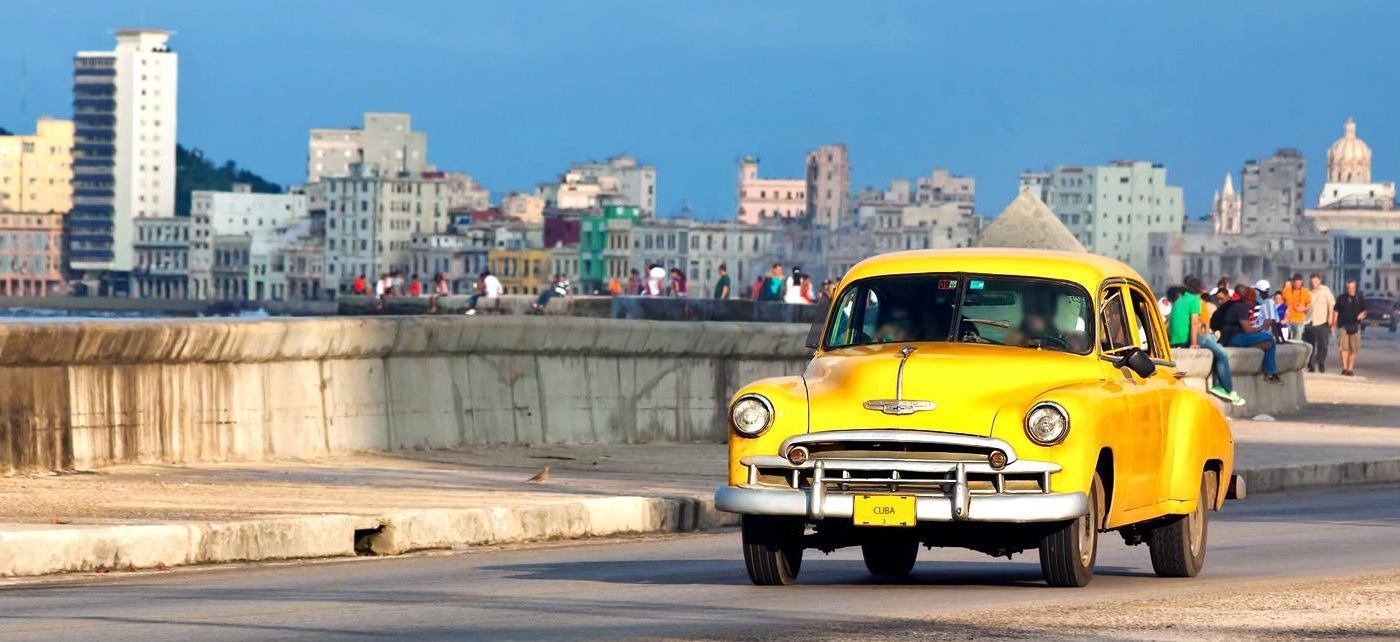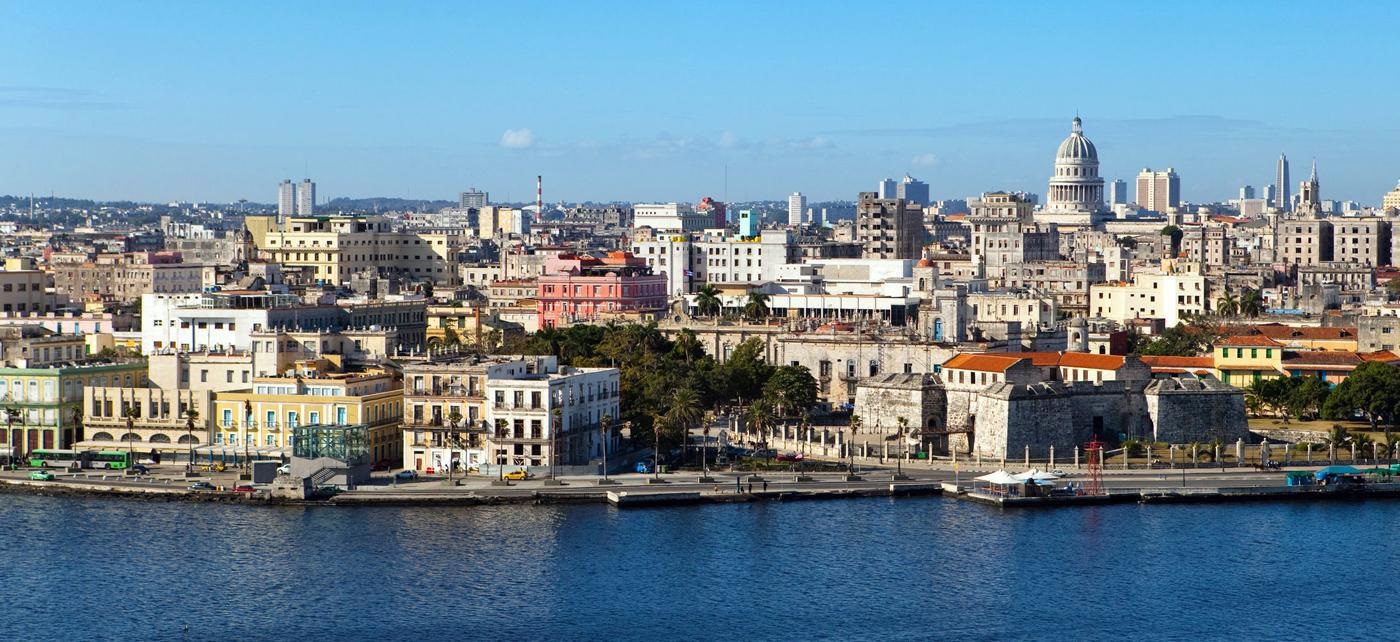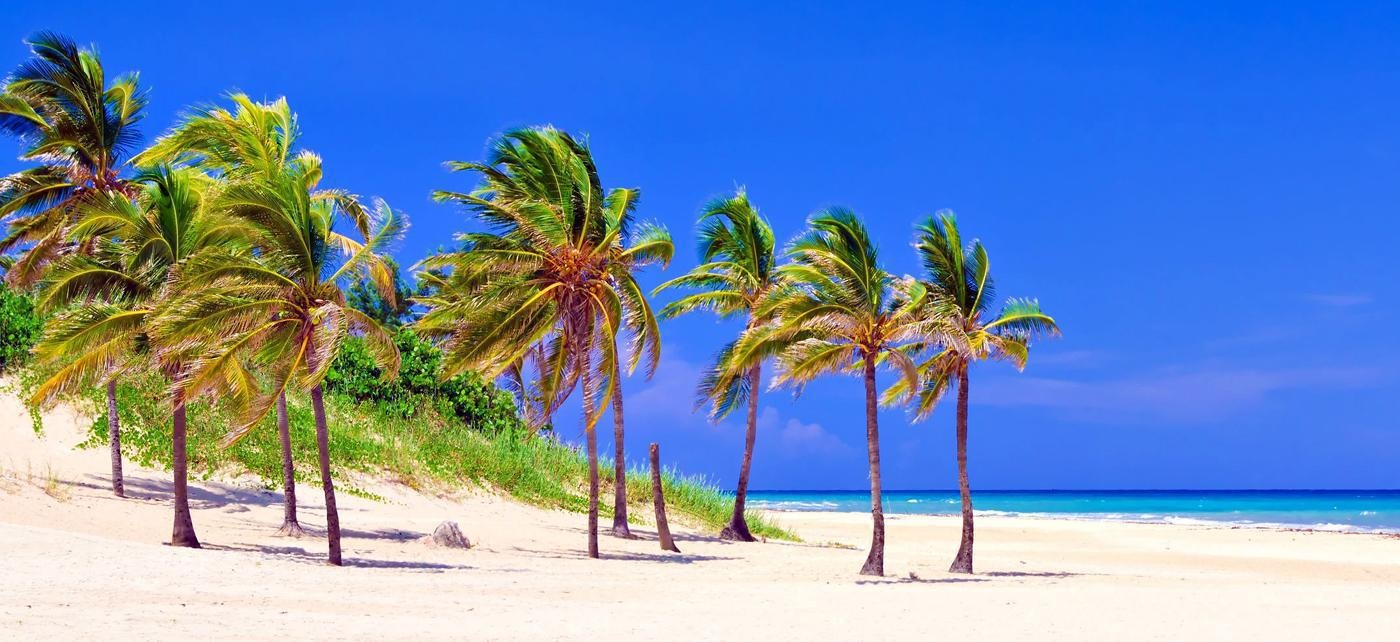The Republic of Cuba is an island nation in the Caribbean. The nation of Cuba consists of the main island of Cuba, the Isla de la Juventud, and several archipelagos. Havana is the largest city in Cuba and the country's capital. Santiago de Cuba is the second largest city. To the north of Cuba lies the United States and the Bahamas, Mexico is to the west, the Cayman Islands and Jamaica are to the south, and Haiti and the Dominican Republic are to the southeast.
In 1492, Christopher Columbus found and claimed the island now occupied by Cuba, for the Kingdom of Spain. Cuba remained a territory of Spain until the Spanish–American War ended in 1898, and gained formal independence from the U.S. in 1902. Between 1953 and 1959 the Cuban Revolution occurred, removing the dictatorship of Fulgencio Batista. A new government led by Fidel Castro was later setup.
Cuba is home to over 11 million people and is the most populous island nation in the Caribbean, as well as the largest by area. Its people, culture, and customs draw from diverse sources, such as the aboriginal Taíno and Ciboney peoples, the period of Spanish colonialism, the introduction of African slaves and its proximity to the United States. Cuba has a 99.8% literacy rate, an infant death rate lower than some developed countries, and an average life expectancy of 77.64. In 2006, Cuba was the only nation in the world which met the WWF's definition of sustainable development; having an ecological footprint of less than 1.8 hectares per capita and a Human Development Index of over 0.8 for 2007.
Cuba was inhabited by Native American people known as the Taíno, also called Arawak by the Spanish, and Guanajatabey and Ciboney people before the arrival of the Spanish. The ancestors of these Native Americans migrated from the mainland of North, Central and South America several centuries earlier. The native Tainos called the island Caobana. The Taíno were farmers and the Ciboney were farmers, fishers and hunter-gatherers.
On 2 December 1956 a party of 82 people on the yacht Granma landed in Cuba. The party, led by Fidel Castro, had the intention of establishing an armed resistance movement in the Sierra Maestra. While facing armed resistance from Castro's rebel fighters in the mountains, Fulgencio Batista's regime was weakened and crippled by a United States arms embargo imposed on 14 March 1958. By late 1958, the rebels broke out of the Sierra Maestra and launched a general popular insurrection. After the fighters captured Santa Clara, Batista fled from Havana on 1 January 1959 to exile in Portugal. Barquín negotiated the symbolic change of command between Camilo Cienfuegos, Che Guevara, Raúl Castro, and his brother Fidel Castro after the Supreme Court decided that the Revolution was the source of law and its representatives should assume command.
Cuban cuisine is a fusion of Spanish and Caribbean cuisines. Cuban recipes share spices and techniques with Spanish cooking, with some Caribbean influence in spice and flavor. Food rationing, which has been the norm in Cuba for the last four decades, restricts the common availability of these dishes. The traditional Cuban meal is not served in courses; all food items are served at the same time. The typical meal could consist of plantains, black beans and rice, ropa vieja (shredded beef), Cuban bread, pork with onions, and tropical fruits. Black beans and rice, referred to as Platillo Moros y Cristianos (or moros for short), and plantains are staples of the Cuban diet. Many of the meat dishes are cooked slowly with light sauces. Garlic, cumin, oregano, and bay leaves are the dominant spices.


